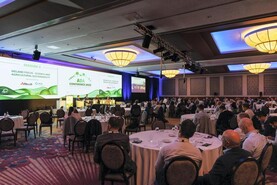The move by some of the dairy co-ops to pay more attention to succession lately is interesting. It’s a sensible move and I think it was needed to ensure as much land stayed in active farming as possible. I think it’s a progressive move.
Drystock is a much more complicated field to operate in that regard to ensure throughput in future, but I wonder is there an opportunity for meat processors or even co-operative marts to consider something similar to ensure their long-term viability.
Think tanks can be put together to form strategies and plan out the road farming can travel for the next five or 10 years. Much of the thought process is focused on economics and the business side of things. That’s to be expected when that’s the expertise of most participants of these groups. Human nature and behaviour tend to take over when the plan starts to become reality.
That might have been something overlooked in dairy expansion. There were some who expected the suckler herd to collapse at a far faster rate than it did since milk quotas were abandoned. From an economic perspective, and on paper, you could see how that made sense.
If you were suckling, and your land base, especially the area close to the yard, was big enough then it was a logical move. Delving down and talking to people there were a variety of reasons why others didn’t make the switch.
It always surprised me when people with sizeable potential milking platforms didn’t change enterprise. Each tended to have a different response when I asked. A common theme was lifestyle, especially if there were households that were busy off the farm. Some farmers across enterprises have mastered the balance of on- and off-farm life, but for those part-time farming it can be harder again.
One of the challenges that tends to be forgotten when it comes to the family farming model is the farming family’s life outside the farm.
That is changing at a faster pace than any change at farm level. I know I keep returning to it but the prime example can be seen in GAA clubs, certainly in rural areas on the western seaboard. They’ve had to adapt.
Old rivalries
It has accelerated over the last 15 years. Lack of numbers have seen GAA clubs amalgamate at underage level. Unpalatable as it may be for some to accept, multi-generational parish rivalries have had to be put aside in some cases as survival became a priority. Amalgamations at adult level will become more of a necessity too over the next decade and there will always be a little bit further to travel.
What might have been a 10-minute round trip to the pitch is now an hour, and in some of the more remote areas of the country it’s even longer. That’s not including an hour or two’s training and bit of craic afterwards.
It’s all fun and necessary, but if you have a young family involved in sport or any off-farm activity and you work off farm yourself something has to give. How jobs are done need to be tweaked or changed completely, and sometimes that is harder for the older generation to accept.
Maybe a solution to that is to look at some form of farm amalgamation too. If not formal partnerships, then surely there’s scope for co-operating with a like-minded farmer. I know it’s not always that simple to do, but it’s something to consider more on the dry stock side especially.






 This is a subscriber-only article
This is a subscriber-only article










SHARING OPTIONS: